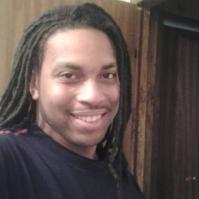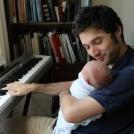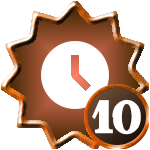-
Posts
3,157 -
Joined
-
Last visited
-
Days Won
272
Luis Hernández last won the day on June 28
Luis Hernández had the most liked content!
About Luis Hernández

- Birthday November 2
Contact Methods
-
Website URL
http://komptools.blogspot.com/
Profile Information
-
Gender
Male
-
Location
Spain
-
Occupation
Physician
-
Interests
Animals, Photography
-
Favorite Composers
Now: Peteris Vasks
-
My Compositional Styles
Eclectic
-
Notation Software/Sequencers
Finale, Dorico, Logic, Studio One, Staffpad
-
Instruments Played
piano, guitar, bass
Recent Profile Visitors
16,763 profile views
Luis Hernández's Achievements
-

Mini-concerto for violin
Luis Hernández replied to Alex Weidmann's topic in Orchestral and Large Ensemble
Yes!! Anyway, the sounds you've got are nice. -

Mini-concerto for violin
Luis Hernández replied to Alex Weidmann's topic in Orchestral and Large Ensemble
Congratulations. I think it sounds great. I certainly think it has a very classical feel to it, but in many places it veers towards something more modern, such as some of the progressions in the slow section. I notice that it is treated mainly as melody plus accompaniment, which is quite light and with little emphasis on the counterpoint. All in all, it works wonderfully. -
That sounds very pleasant. I always think these types of buildings are wonderful.
-
Link fixed: Tintinnabuli. (I): Essentials Tintinnabuli (II): T voice Tintinnabuli (III): M voice Tintinnabuli (IV): Adding T voices Tintinnabuli (V): Adding M voices Tintinnabuli (VI): Adding complexity Tintinnabuli (VII): Addendum
-

Rate my 3rd Sonata!
Luis Hernández replied to TristanTheTristan's topic in Piano Music, Solo Keyboard
I think the initial motif, consisting of one measure, is repeated too often (16 times). It then gives way to another motif in eighth notes that is also repeated many times. I don't think it's just a matter of repetition, but rather that limiting the motif to one measure results in a lack of musicality overall (there is no unity in the overall phrase). The cadenza suffers from something similar. On the other hand, there are some parts or moments where the writing is less suited to a real pianist than to MIDI-type sound. I think that if it were treated differently, in terms of accents and dynamics, it could be closer to a contemporary sound. Although the cadenza moves between a very classical style and a more naive one. In measure 85 there is a change, but the idea of the rhythmic ostinato remains throughout. The scherzo, in my opinion, is too fast. The trio promised a change, but the accompaniment is just as fast. At those speeds, which I don't know if they would cause fatigue in the performer, the musicality is lost (for me). I quite like the Lento, it has a predominantly quartal harmony that makes it very clear sonically. Some mega-chords in the left hand need to be rewritten using both hands. The change (transition) at bar 33 needs to be worked on, as it is simply an abrupt turn. The Allegro ma non troppo is also very good; it sounds very Mozartian. I think there are many different ideas, and a sonata is not just about taking different structures and placing them one after the other. Perhaps the complicated thing is to make it sound like a single thing. -

Op.181 for piano (original composition for organ)
Luis Hernández replied to Demertzis's topic in Piano Music, Solo Keyboard
I think the arpeggio in the accompaniment sounds better in the piano version; it seems more idiomatic than for an organ. -
I think it has interesting parts, both because of certain harmonic contrasts and some syncopated moments. But it's a bit of a mix of styles, which makes it seem a little pastiche, like the ending with the arpeggios in the left hand, which is something new compared to what came before. It's difficult to transition between very chromatic parts and others that sound much more standardized. In conclusion, I think there are many ideas that, although interesting, blur the overall structure.
-
therealAJGS started following Luis Hernández
-
A very good effect overall. The high tessitura of the melody, as well as the arpeggios in that area, give a very ethereal effect and also suggest drops of water falling. Another thing that I think contributes is leaving the note suspended in the second part of the bar in the accompaniment. There are also some very beautiful harmonic changes, such as in bars 6 and 5... It sounds fantastic.
-
The waltz sounds very good and has some surprises at the end. The study, in the bars where there is more counterpoint, still sounds basic. For example, because the accompaniment sometimes takes notes only from the chord in some bars (9, 10). Also because there is obvious parallel movement (13, 14).
-
This reminded me of the things Brian Eno used to do.
-
The first one cannot be heard. The second one sounds good and fluid, with very clean changes in tonality to the dominant and back.
- 1 reply
-
- counterpoint
- invention
-
(and 1 more)
Tagged with:
-
It sounds phenomenal. I always really enjoy microtonal music; it has a special aura, which is obviously different from what I'm used to. In this case, I also like how it's organized into a little fugue. The dynamics are great.
-

Fugue XI in F major for 3 voices
Luis Hernández replied to Wieland Handke's topic in Piano Music, Solo Keyboard
It sounds great. I think the theme is very original, and when that happens in a fugue, it's much easier to follow the developments. To my taste, but this is just my personal opinion, the tempo is perfect. Because when there are fugues with dense textures and the movement is very fast, I think you lose a little bit of that sense of knowing where things are going aurally. The layout of the video is great. And the score is very, very detailed (sometimes I think some things could be simplified), and that's a plus. -
Sounds good. But here are a few observations: In my opinion, there is little use of inverted chords. So much movement of the bass in root notes is very strict and not very melodious (it is not in keeping with the counterpoint style). There are some strange twists in some modulations. In measure 7 you have Bm - E.... and then Gm!! It's true that Gm - C - modulates to F. But that jump from E to Gm is harsh in this context. Something similar happens in bar 11: F - Em(b5) -- F# (b5) - B... to go to Em. These are progressions that appear with sudden changes and make it sound very strange. I'm not saying that this can't be written, but in this absolutely tonal context, I think it's out of style. If you do this in a contemporary language, it could work.
-
Hello The truth is that, although I love most pop music, when it comes to writing music, I have always done so “note by note” with orchestral instruments. But I have often heard short piano pieces where a base sound or harmonic cushion is added. Sometimes excessively so. But anyway, I wanted to try something very simple and add (in some parts) a couple of basic notes of harmony. I liked the result.











.thumb.png.8b5b433a341551e913a34392660bc95b.png)
.thumb.png.1e2763f479362bbb522da50d31ef2e50.png)





